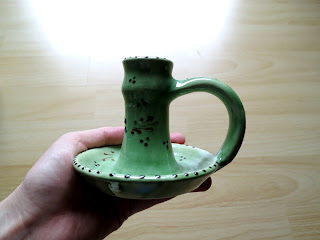2 drawing tips: tracing and wrapping
No matter if its 100% blind contour drawing, 50-50, or in any ratio you are using, I hope you are having fun with this method 😊. A quick reminder for everyone who start doing B.C.D.: the purpose of this method is to allow us to feel the object, not accurately draw it. It helps us to break the realistic image confinement in our daily life and opens the connection between the objects and ourselves; let us draw what we really see in our brain and see how unique it can be. B.C.D also helps us learn to see the limitations and disclaimers that our societies have formed and we can actually decide whether or not we want to accept it.
Now I want to move on from B.C.D. to the next topic, "drawing", but it doesn't mean you should bring B.C.D. down to the basement. In fact, it is still a very important creative method used by many people. I've seen art students sitting in museums doing B.C.D. from old masters' works. Revisiting every skill you've learned by practicing regularly is important in art making, so it will integrate and become part of you, and your personal expression will take care of itself.
*Drawing*
Although many people say that drawing and painting are the same, I prefer the definition, that drawing means paying attention on forms and lines, while painting is adding the consideration of colors and color values.
Since the Art-Teaching-Movement in 1901 in Germany a new focus on drawing is formed. Nowadays we call it by many names, like free-hand drawing, kids drawing, doodling and sketching. The principle of this drawing skill is to draw without any measuring instruments.
After doing B.C.D. a while, you may find that your drawings are getting better and better, it looks more and more like the thing you are looking at, this means your eye-hand coordination is getting better and you start gaining confidence, and then, you want more. To want more is a default program in all human beings, and if it happens in art making, you definitely don't want to miss the drive.
When I had this feeling from my B.C.D. practice, I immediately wanted to know how to draw the "real" thing (the truth is, as long as it's your creation, it is the real thing). Ya..it was at the beginning of my learning about art and at that time I still had loads of limitations and expectations on myself (now I have less, but still many to be shaken off). It was a head breaking learning process, too many skills to learn and too much confusion. I was hoping all the time that I had a teacher or two, or I could have gone to an art school, but now I am glad I didn't (but this is another story for another day).
What I want to share with you and how I share it is based on my own learning experience. I pick out the skills and know-how I wish I would have encountered earlier, so the process could have been smoother and less of a struggle without setting boundaries. But I also have to say that the hard part is the invaluable part of self-learning and I've learned to enjoy it.
*2 tips for who wants more: tracing and wrapping.*
Tracing is like B.C.D, for you to get familiar with your objects. Using tracing paper or drawing directly on an object photo to learn about the shapes and details. There are also many artists using projectors, grid measuring methods and other ways I don't know about yet. Some people say it's not legit, I would go against this opinion. My reason is that you should never limit yourself in art making, just don't copy other people's work and say it's yours. 😏
Wrapping is a gem, it focuses on the whole form rather then the contour, and this is what you will learn if you go to art school. Have you seen street artists prepare portrait paintings? They normally start with some vertical and horizontal lines that will make people ask "Aren't they suppose to draw a head?"
What the artists do is wrapping, aka, mapping the space (for the head). The idea is to map out the space that the object will occupied, then draw the object into the space, this way the proportion is easier to be defined.
First, draw some lines to map out the whole space.
Second, draw the object into the space.
I hope my explanation is clear on the wrapping method and I will do a video on this next time.





Comments
Post a Comment